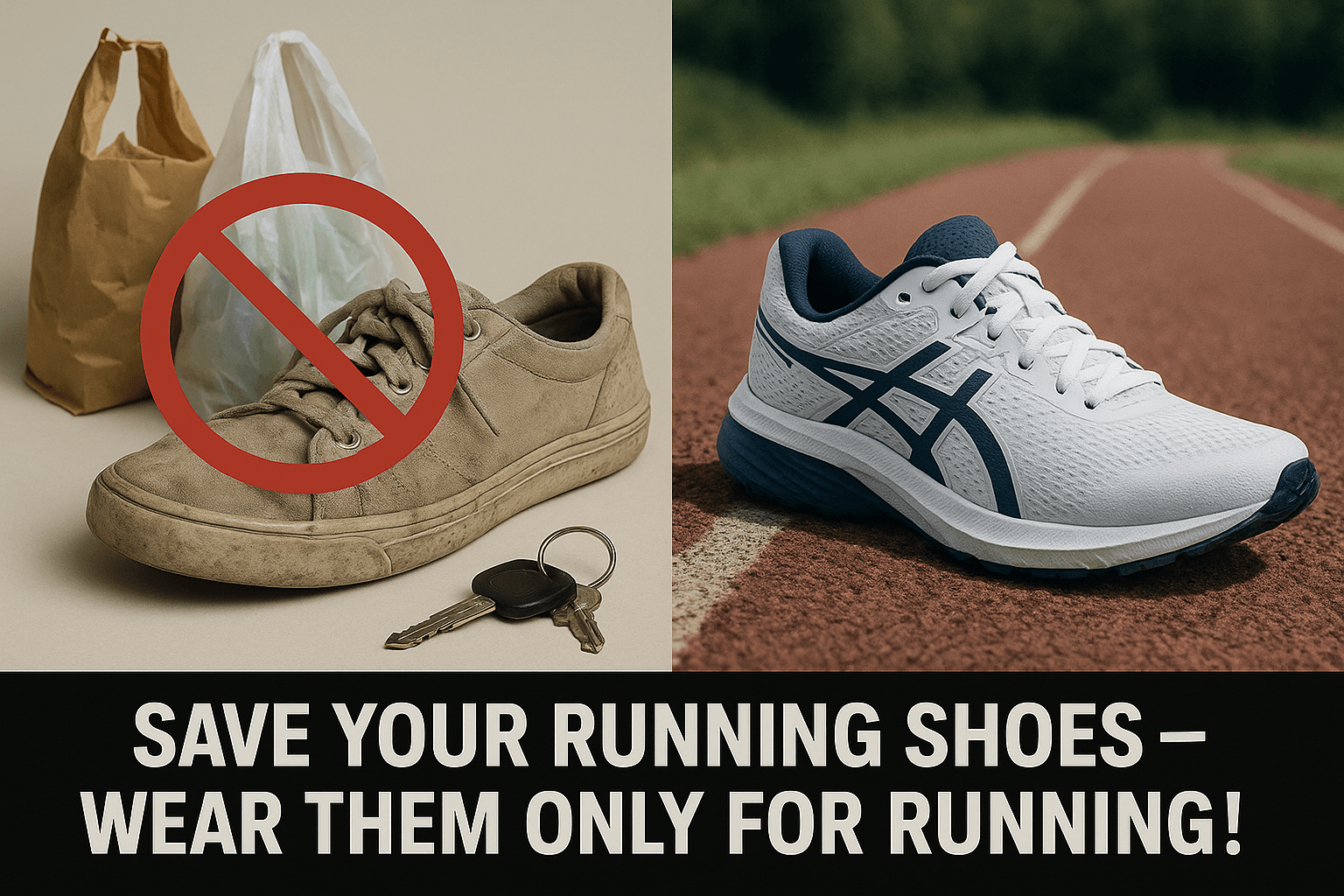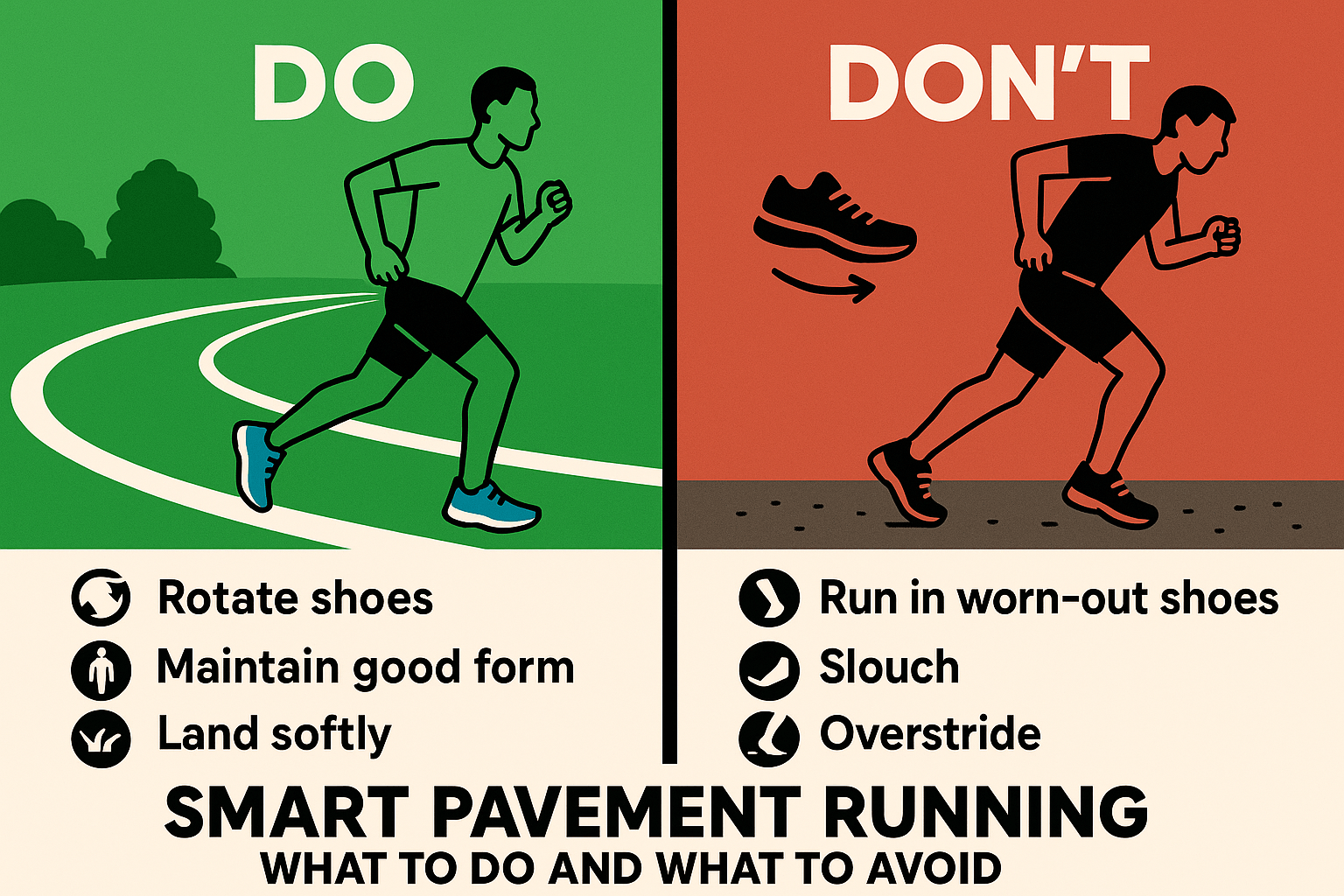Every runner’s got that one pair of shoes, right?
The ones that have seen it all—your easy runs, your “what the heck was I thinking?” days, and everything in between.
You know the ones I’m talking about—the shoes that stuck with you through all the good and bad miles, the runs where you felt like a pro, and those ‘why did I even show up today?’ kind of days.
But here’s the truth: no matter how much you love those shoes, they’re not invincible. They’ve got an expiration date.
Look, I hate to break it to you, but that pair of shoes you’ve been pounding for 500 miles? Maybe it’s time to retire them.
Yeah, I’m sure you’re not looking for any of that. Let me break it down for you.
How Long Should Running Shoes Last?
Ask any runner or coach, and they’ll probably tell you the same thing: “Your shoes should last around 300-500 miles, or about 500-800 kilometers.”
That’s roughly 5-8 months if you’re running 20 miles a week. But I’ve got news for you—this isn’t a hard-and-fast rule.
It’s just a guideline, and a pretty broad one at that.
I’ve been through it myself: some shoes barely made it past 200 miles, while others that I thought were on their last legs kept going strong long after I’d written them off.
I mean, who hasn’t had a pair that felt like they were about to crumble at mile 100, only to last another 300 miles? I’m pretty sure you know what I’m talking about.
Why the difference? It’s simple: not all shoes are created equal.
Different runners, different shoe types, different needs, and of course, different circumstances.
Here’s what really affects how long your shoes last:
Your Running Style
The way you run plays a huge role in how fast your shoes break down.
For example, if you’re a neutral runner, your shoes will tend to wear more evenly, which means they might last a bit longer.
But if you overpronate (your feet roll inward too much) or supinate (you push off from the outside of your foot), the wear patterns will be more uneven, and your shoes could break down quicker.
Here’s the science: Pronation is the way your foot rolls when you run. According to a study published in the Journal of Sports Sciences, overpronation and supination increase the stress on the shoe in certain areas, especially the inner or outer side of the sole.
Over time, this uneven stress leads to accelerated breakdown in those areas.
For example, runners who overpronate often see more wear along the inside of the shoe, particularly around the arch, while supinators wear down the outer edges faster.
This localized breakdown can make shoes feel worn out much sooner than the standard 300-500 miles.
2. Your Build
Your body weight and running mechanics also matter. Heavier runners tend to generate more force with each stride, which means more pressure on the shoes.
According to a study from the International Journal of Sports Physiology and Performance, a heavier body mass results in greater impact forces during running, leading to faster degradation of the shoe’s cushioning.
The study found that runners with higher BMI (body mass index) experience a quicker compression of the midsole foam. This means their shoes will lose their cushioning and support sooner, which can affect both performance and injury risk.
One notable stat: for every 10 pounds of body weight, the impact force on the ground increases by roughly 30%. So, if you’re heavier, your shoes will wear out faster—not necessarily because you’re running more miles, but because each stride is harder on your footwear. You can also check this post on how the extra pounds can impact your running performance – not just your shoes.
3. Where You Run
The surface you run on can also make a big difference in how quickly your shoes wear out.
If you’re logging all your miles on pavement, you’re going to burn through those shoes faster than if you’re hitting soft trails or grassy paths.
Asphalt is tough on shoes, especially in high-impact zones like the heel or forefoot.
In fact, according to a study in The Journal of Sports Medicine, running on hard surfaces like concrete or asphalt can increase the wear and tear on running shoes by as much as 25-30% compared to running on grass or dirt trails.
Here’s why: pavement doesn’t give, which means all the force from your foot strikes is absorbed directly by the shoe’s cushioning. This causes the midsole foam to compress quicker, reducing its shock-absorbing ability faster.
On the other hand, dirt trails or grass have more “give” and tend to reduce the shock that hits your shoes with each step. The terrain can significantly extend the life of your shoes because it’s less demanding on your footwear.
4. How You Use Them
Here’s something that most people don’t think about: how you use your running shoes affects how long they last.
If you’re wearing your shoes to run errands or just for daily wear, you’re adding unnecessary miles to them. Those extra steps, though they seem insignificant, do contribute to the breakdown of your shoes’ cushioning.
The added pressure of walking around in shoes designed for running puts strain on the materials that are otherwise designed to withstand only the specific forces generated during running.
So, while it might seem like a good idea to wear your shoes all day, those casual steps will lead to quicker degradation of the foam and cushioning in the shoe.
Keep this in mind if you’re trying to extend the life of your shoes and want to maximize those precious miles.
Signs It’s Time to Retire Your Shoes
I talked a bit about how the 300-500 miles rule ain’t written in stone, as well as the factors that actually impact your shoes’ lifespan.
Now let me break down the main signs that it’s time to kiss your shoes goodbye and look for a new pair.
1. Worn-Out Soles
This one’s a no-brainer. Check out those soles. If they’re flat and slick, you’re basically skating, not running. You’ve lost traction, and if one shoe’s more worn out than the other, it’s a sign you need to check your form.
Usually, the sole is the first thing to go in running shoes. If you’re slipping on wet pavement or your shoes look like a flat tire, it’s time to say goodbye.
2. Your Shoes Feel Flat (No Bounce)
Press your thumb into the midsole. Feel that? If it’s harder than a brick, your shoes are done. That means the cushioning is toast.
When that bounce disappears, so does your joy for running. Don’t ignore this—your joints are gonna thank you later. You’ll feel every step, and your knees? Yeah, they’re gonna start complaining.
3. The Upper is Falling Apart
The upper part of your shoe is just as important as the sole, trust me.
If it’s torn, loose, or looking like it’s been through a war, your foot isn’t getting the support it needs. If it feels loose or uncomfortable, it’s time to retire them.
4. Unexplained Aches and Pains
New aches in your knees, hips, or joints after a run? Yeah, that’s your shoes talking to you. As your shoes lose their shock-absorbing power, they’re no longer giving you the support you need.
That’s literally their job, so those aches? Not in your head. They’re real.
5. Running Feels Harder
Ever notice how your usual route starts feeling like a freakin’ obstacle course? That’s your shoes begging for a break.
Worn-out shoes mean more effort and way less comfort.
Running will feel like dragging bricks through mud, and you’ll be wiped out way quicker than usual. If every step feels like an uphill battle, your shoes are the problem.
6. Shoe Shape or Structure
If the heel or sides are losing their structure, it’s time to replace them. A wobbly heel means your ankles aren’t getting the support they need, and that’s a recipe for injury.
So, if the back part of your shoe is soft and squishy, your ankle’s support is gone, it’s time to get a new pair.
7. The Shoe’s Sound
Yes, you read that right!
Shoes have a sound. If they squeak or creak with every step, it’s a sign the structure’s done for. You’re not imagining it—it’s time for new shoes.
How to Make Your Running Shoes Last Longer
We all want our shoes to last as long as possible, right?
Here’s how to stretch out their lifespan while keeping your feet happy:
- Rotate Your Shoes. Running more than three times a week? Get two pairs. Rotating gives your shoes time to rest, dry out, and recover. Plus, it helps prevent injuries because your muscles get used to slight variations in the shoe design.
- Only Wear Them for Running. I hate to sound like a broken record but please don’t wear your running shoes to the grocery store. Using them for casual errands just speeds up the breakdown process. Please keep your running shoes for—wait for it—running only.
- Take Off Your Shoes Properly. Don’t crush the heels when you take them off. Always unlace them to preserve their shape. It’s a small thing, but it matters.
- Keep Them Clean and Dry. A quick clean after each run goes a long way. No dryers or heat sources! A good air dry, maybe stuffed with newspaper, will keep them in solid shape.
What to Do with Worn-Out Running Shoes
When your running shoes have reached the end of their life, don’t just toss them. Repurpose, donate, or recycle!
Here’s how:
- Repurpose: Use them for gardening, DIY projects, or as backup shoes for the gym.
- Donate: If they’ve still got some life left, donate them. There are plenty of places that’ll take gently used shoes.
- Recycle: Check if local stores or recycling centers accept old shoes. You’re helping the environment, and you’re not letting them sit in a landfill.
Conclusion
In conclusion, the 300-500 mile guideline is a good starting point, but it’s far from a one-size-fits-all rule. Your running style, body weight, terrain, and how often you wear your shoes all contribute to their lifespan.
Understanding these factors—and how they interact with your shoes—will help you make a more informed decision about when to retire your kicks and replace them for the next round of miles.




